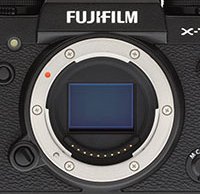Mechanical versus electronic shutters: Pros and cons and when to use each shutter type
posted Monday, March 27, 2017 at 2:00 PM EDT

Mechanical shutters, which come in focal plane and leaf varieties, were the only option for a long time. However, many modern digital cameras now have electronic shutter options, either in the form of electronic first curtain shutters or fully electronic shutters. Both mechanical and electronic shutters come with their own pros and cons. A new article at SLR Lounge does an excellent job of breaking them down if you’re curious about the differences between the types of shutters and how these differences can affect your work, both in terms of stills and video recording.
When considering electronic shutters, there are two primary options: rolling shutter and total shutter. The latter is sometimes referred to as a global electronic shutter and it sees the sensor be powered on for a set duration of time (shutter speed). The former option, which is used in most cameras has the camera record one row of pixels at a time across the width of the sensor.
There are pros and cons for electronic shutters, which are covered very well in the video below by photographer Robert Hall.
As you can see in the video below, Hall uses a Fuji X-T2 to showcase how mechanical and electronic shutters work and when you should use each. One perk of an electronic shutter is that it doesn’t have any moving parts, which means that you don’t need to worry about an electronic shutter breaking down as heavily-used mechanical shutters could. Another perk of no physical parts is that there’s no shutter shock with an electronic shutter, meaning you don’t need to worry about image quality being affected by the physical movement of a mechanical shutter nor the sound of a physical shutter. It’s nice to be able to capture an image silently. Another great thing about an electronic shutter is that you can achieve very fast shutter speeds. Some cameras with electronic shutters can shoot as fast as 1/32000s, although something like 1/16000s is more common, which is still twice as fast as the mechanical shutters found in flagship cameras such as the Nikon D5 and Canon 1DX Mark II.
What about the cons of an electronic shutter? Watch the video above to learn about how the rolling shutter mechanism affects image quality in a variety of situations. There are some surprising side effects of using an electronic shutter!
(Via SLR Lounge)